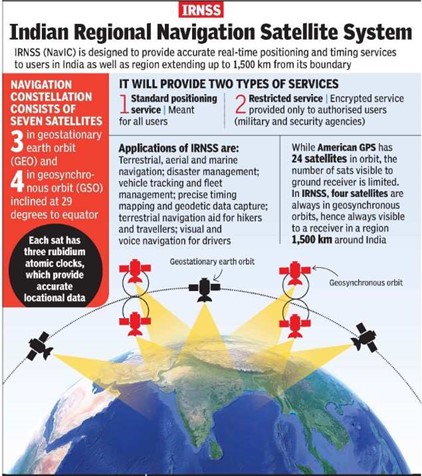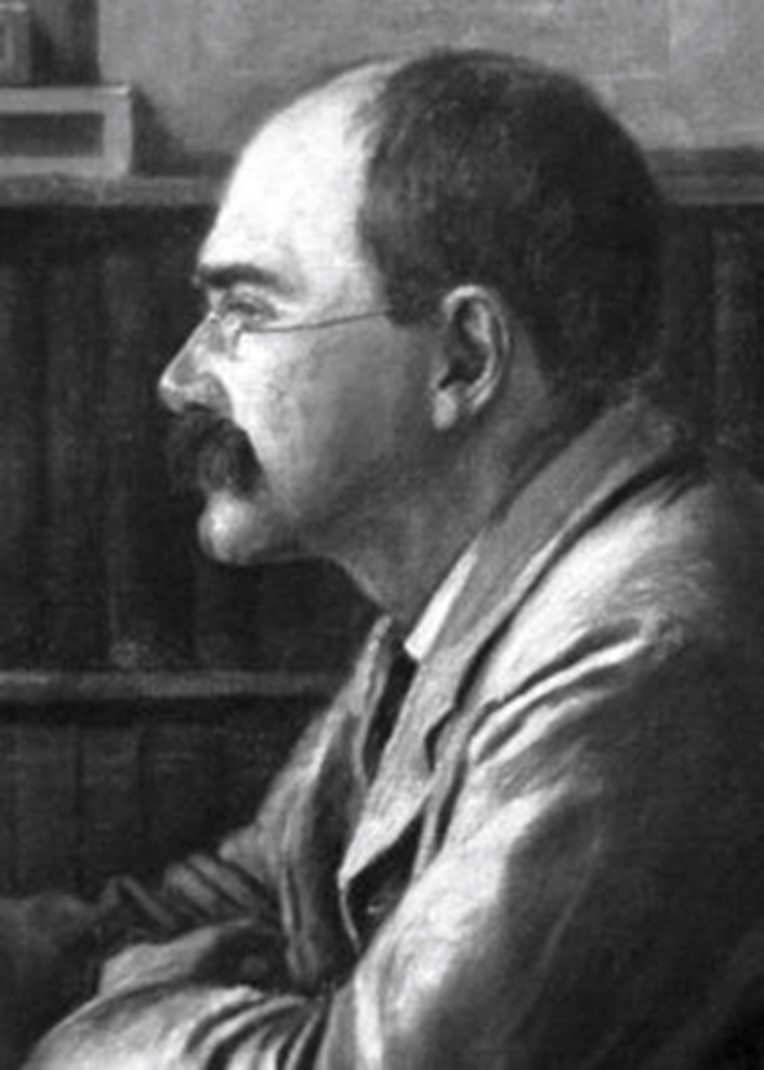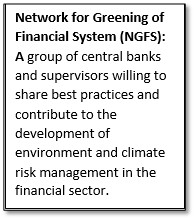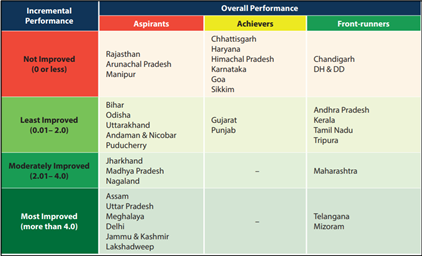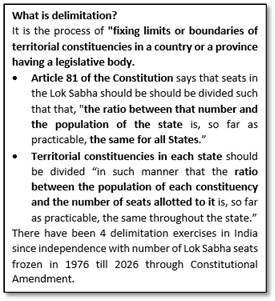Monday, 3rd January 2022
Hate Speech - Edukemy Current Affairs
In News
A recently held religious conclave held in Haridwar had witnessed inflammatory and provocative speeches.
What is ‘hate speech’?
- There is no particular legal definition of ‘hate speech’.
- Any speech, writing, action, sign and representation that foment violence and spread disharmony between communities and groups are criminalised by law and these are referred to as ‘hate speech’.
- The Law Commission of India defines “Hate speech as an incitement to hatred primarily against a group of persons in terms of race, ethnicity, gender, sexual orientation, religious belief
- In general, hate speech is considered a limitation on free speech that seeks to prevent or bar speech that exposes a person or a group or section of society to hate, violence, ridicule or indignity.
Laws in India w.r.t. Hate Speech
- Sections 153A and 505 of the Indian Penal Code are generally taken to be the main penal provisions that deal with inflammatory speeches and expressions that seek to punish ‘hate speech’.
- Under Section 153A, ‘promotion of enmity between different groups on grounds of religion, race, place of birth, residence, language, etc., and doing acts prejudicial to maintenance of harmony’, is an offence punishable with three years’ imprisonment and attracts a five-year term if committed in a place of worship, or an assembly engaged in religious worship or religious ceremonies.
- Section 505 of IPC makes it an offence to making “statements conducing to public mischief”. This attracts a jail term of up to three years and a five-year jail term if it takes place in a place of worship, or in any assembly engaged in religious worship or religious ceremonies.
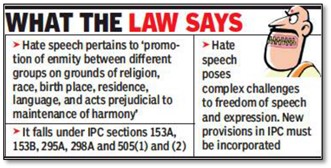
Proposal of the Law Commission w.r.t. The Law Commission has proposed that:
- IPC Sections: Separate offences be added to the IPC to criminalise hate speech specifically instead of being subsumed in the existing sections concerning inflammatory acts and speeches.
- It should punish acts and statements that promote racial discrimination.
- It has proposed the addition of two new sections, Section 153C and Section 505A.
- Section 153C: Should make it an offence if anyone
- uses gravely threatening words, spoken or written or signs or visible representations, with the intention to cause fear or alarm; or
- advocates hatred that causes incitement to violence, on grounds of religion, race, caste or community, sex, gender identity, sexual orientation, place of birth, residence, language, disability or tribe.
- It proposes a two-year jail term for this and/or a fine of ₹5,000 or both.
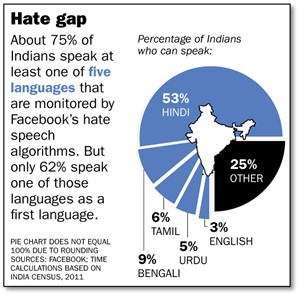
- Section 505A: Should criminalise
- Words, or display of writing or signs that are gravely threatening or derogatory, causing fear or alarm or, with intent to provoke the use of unlawful violence against that person or another”.
- It proposes a prison term of up to one year and/or a fine up to ₹5,000 or both.
Source:
Image Source:
EWS quota panel recommendation
In News
The government appointed panel to review the EWS quota criteria has presented its recommendations.
About the News
- Petitions were previously filed in the SC challenging the income criteria for the EWS quota in the NEET exam that determines admissions to medical colleges.
- Government has been questioned by the Supreme Court on how it arrived at the Rs 8 lakh income limit.
- In response the government had constituted a three-member expert committee to review the EWS quota criteria comprising of Ajay Bhushan Pandey, VK Malhotra and Sanjeev Sanyal.
- The Central Government has decided to accept the recommendation made by an expert committee to retain the limit of Rupees 8 lakhs gross annual income for Economically Weaker Section(EWS) reservations.

What are the important features of the EWS quota?
- EWS quota was issued through a notification issued by the Department of Personnel & Training in 2019
- It has provisions for eligibility criteria of 10% reservations for the Economically Weaker Sections (EWS) in government institutes and jobs.
- There were several petitions being filed in the top court challenging the income criteria for the EWS quota in the NEET exam that determines admissions to medical colleges.
What are the major recommendations of the panel?
- The three-member panel has suggested dropping the existing criteria on residential asset size while retaining the Rs 8 lakh annual income limit.
- Exclusion of all candidates with agricultural land over 5 acres.
- Recommendations be implemented only from the next admission cycle as any sudden change will cause a major disruption across educational institutes and create complications for both beneficiaries and the authorities.
- A ‘three-year feedback loop cycle’ be used to monitor the actual outcomes of these criteria and then be used to adjust them in future.
- Continuation of the existing process for the current admission cycle.
- Proposal to use data exchange and information technology actively to verify income and assets and improve targeting for EWS reservations as mere 9% and 8.2% of EWS candidates were found to be in the income bracket Rs 5-8 lakh
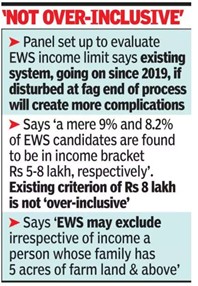
What are the major issues?
- Mere possession of residential house may not correctly reflect the economic condition of the candidate or his family, especially if it is used only as a dwelling unit and not for generating any income.
- Any EWS exclusion criteria only based on owning a house may lead to unwanted exclusion of deserving candidates.
- Removal of agricultural land over 5 acres limit may result in big landowners being included in EWS.
- Cut-off lower than Rs 8 lakh on family income can be ‘unduly restrictive and may lead to errors of exclusion of the deserving ones.
Sources:
Battery Technology
In News
Recent innovations in battery technology has again brought into focus the growth and vitality of the sector.
Developments in battery technology
- The first true battery was invented by the Italian physicist Alessandro Volta in 1800. Volta stacked discs of copper (Cu) and zinc (Zn) separated by cloth soaked in salty water.
- The lead-acid battery was invented in 1859 and is still the technology used to start most internal combustion engine cars today.
- New type of lithium battery was invented in 1980 in which the lithium (Li) could migrate through the battery from one electrode to the other as a Li+ ion.
- Nickel-metal hydride (NiMH) battery was created in 1990s that no longer required toxic metals such as cadmium in its manufacturing process.
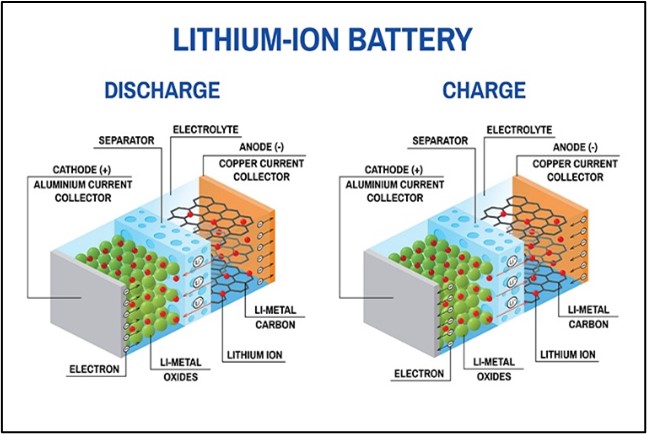
Problems with development in battery tech
- Long charging times and weak energy density persist despite significant research in the sector.
- Lithium-ion batteries are sufficiently efficient for phones and laptops, but they still lack the range that would make EVs a viable alternative to internal combustion engines.
- Lithium metal is extremely reactive. In current lithium-ion batteries, in which the electrolyte is a flammable liquid, dendrite formation can trigger a fire.
- Dendrites are branched lithium structures that grow out from the electrode and can potentially pierce through the separator and on to the other end, short-circuiting the cell.
New developments in battery tech
- Solid-state lithium-metal battery: A solid-state batteryis a battery technology that uses solid electrodes and a solid electrolyte, instead of the liquid or polymer gel electrolytes found in lithium-ion or lithium polymer batteries.

- Rechargeable iron-air battery: It claims to be capable of delivering electricity for 100 hours at a system cost competitive with conventional power plants.
- The battery leverages the concept of ‘reversible rusting’ — it uses oxygen from the air and converts iron metal to rust while discharging, and while charging, the application of an electrical current transforms the rust back to iron and the battery releases oxygen back into the air.
- “tabless” lithium-ion battery: It could improve an electric car’s range and power. A tab is the part of the battery that forms a connection between the cell and what it is powering.
India’s Battery Technology Push
The Centre is working on a blueprint for a project of around 4,000 MWh of grid-scale battery storage system primarily to balance the vagaries of renewable generation. Alongside this, special emphasis is given to National Programme on Advanced Chemistry Cell (ACC) through Production Linked Incentive (PLI) Scheme.
Sources:
Savitribai Phule Jayanti
On 3rd January, 1831, Krantijyoti Savitribai Phule was born in a village called Naigaon in the Satara district of Maharashtra. The year 2022 marks the 190th birth anniversary of Savitribai Phule. The day is observed in Maharashtra as Balika Din. She started the first-ever school for girls in India in 1848 at Bhide Wada, Pune. Jyotirao Phule, her husband, was one of the pillars of support. Phule encouraged women to attend school by offering them stipends. Although most of the schools were for upper-caste women, Savitribai and Jyotirao set up schools for Dalit and lower-caste women as well. She opened a well for ‘untouchables’ at her residence in a defiant act against the caste system and also started a care centre for pregnant rape victims called ‘Balhatya Pratibandhak Griha’. Phule also set up a ‘Mahila Seva Mandal’ where women would gather and she would raise awareness about women’s rights. She helped several people when the bubonic plague hit the world, opening up a clinic with her son, Yashwant, in 1897 to help patients.

Source:
India’s burgeoning ties with Vietnam
In News
Recently, India and Vietnam celebrated the 5th Anniversary of India-Vietnam Comprehensive Strategic Partnership.
On this occasion both countries signed key agreements including 12 MoUs in several areas such as technology aviation, internet of things (IoT) blockchain, infrastructure, as well as petrochemical refinery projects, and oil and gas processing.
India-Vietnam Relations: A brief Background
- Vietnam is one of India’s closest partners, trusted friend and an important pillar of its Act East Policy and Indo-Pacific Vision. The ties after Independence continued in the spirit of understanding and mutual support.
- India and Vietnam have elevated their relations from Strategic Partnership in 2007 to the ‘Comprehensive Strategic Partnership’ in 2016, making Vietnam the first ASEAN country with whom India concluded a Comprehensive Strategic Partnership.
- In 2020, both countries put forward a ‘Joint Vision for Peace, Prosperity and People’. It focuses on greater cooperation driven by the promise of new technologies, by innovation, and by digitization to deliver good governance, people’s empowerment, and sustainable and inclusive development.
- Bilateral relations are thriving in all areas ranging from trade and investment; to energy cooperation; defence cooperation and a long-standing development partnership.
- India and Vietnam also cooperate closely in various regional forums like ASEAN, East Asia Summit, Mekong Ganga Cooperation besides, the UN.
- 2022 will mark the 50th anniversary of the establishment of India-Vietnam diplomatic relations.
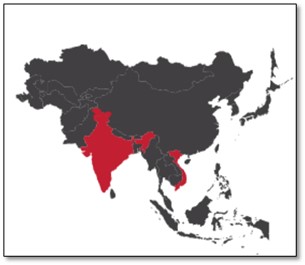
Areas of Convergence and cooperation
- Global Outlook: As political and security partners, India and Vietnam have converging interests in a multi-polar and rebalancing world. Both have been supportive of each other’s objectives, whether in ASEAN-led forums or on global platforms, such as the cooperation in the UNSC.
- The shared respect for international law, including UNCLOS 1982, and a rules-based order is a strong commonality between the two countries.
- Both societies are independent and deeply committed to maintaining their freedom of choices. These traits make India and Vietnam the foundation of a multi-polar Asia in the coming years.
- Economic Relations: Bilateral trade crossed the US$ 10 billion mark in 2020, and is likely to exceed US$ 12 billion this year. To realize its full potential, however, both countries should work towards promoting reliable, efficient and resilient supply chain systems and fashion a complementarity between India’s vision of self-reliance and Vietnam’s growing economic vitality.
- The ASEAN-India Trade in Goods Agreement that is under review will help expand the trade targets.
- The development partnership: India has shared its experience in the fields of IT, science & technology, defence, agriculture, and space. India has contributed to both institution building and human resource development in Vietnam.
- Under the Mekong Ganga Cooperation framework, India has been implementing 37 Quick Impact Projects (QIPs) in 33 provinces of Vietnam. These projects are not only bringing benefits to the local community, but also helping Vietnam in reaching its Sustainable Development Goals.
- Historical and Cultural Linkages: There is over two millennia old historical and cultural linkages. The Archaeological Survey of India (ASI) has been a particularly effective vehicle to rediscover these roots. ASI recently found a 9th century monolithic Shiva Linga at the My Son Temple complex.
- The ties are being further expanded to cover another block of the Cham Temple at My Son, the Dong Duong monastery at Quang Nam and the Nhan Cham Tower at Phu Yen.
- Geopolitical convergence: The success of Act East Policy has led India to adopt a larger Indo-Pacific approach that captures India’s growing strategic interests more effectively. From the Indian perspective, Vietnam is a key partner both in the ASEAN and the Indo-Pacific context.
- The commerce, connectivity or culture as well as political and defence cooperation can be further buttressed by interaction between the ASEAN Outlook on Indo-Pacific and the Indo-Pacific Oceans Initiative that has been proposed by India.
India-Vietnam Relations and China: A Geopolitical Analysis
- Vietnam is a key player in India’s Act East Policy and is distressed due to China’s overarching position in the South China Sea. Vietnam is at a key location; its coastline meets the South China Sea (SCS).
- The SCS is a substantial contentious zone, geopolitically sensitive due to Chinese aggressive SCS policies, such as building artificial islands, claiming sovereignty over the entire region, and militarization the area.
- Vietnam has called for restraint in SCS after its long standoff with China and the Philippines has taken China to the United Nations Convention on the Law of the Sea (UNCLOS).
- China’s expanding infrastructural investments in India’s periphery have led to a regional security dilemma in Indian Ocean Region. India is steered to pursue opportunities to counter China in the latter’s periphery, to which Vietnam fits as an apt ally.
- China’s Belt and Road Initiative (BRI) strategies and expanding hegemonic influence in Indo-Pacific are considered a threat to global security in general, and Indo-Pacific in particular. Hence, India’s Vietnam policy, embedded within its Act East Policy, aims to tap this veiled potential to primarily aid Vietnam to build its economy and collaborate as a geostrategic ally, to offer a counterbalance to Chinese expansion in Indo-Pacific. India aims to build Vietnam as an ally in Southeast Asia, similar to what Pakistan is for China in its periphery.
Vision for Future engagements
India’s relationship with Vietnam will be both of a challenger, as well as of a collaborator.
Economic tradeoff
- Vietnam is a growing technology manufacturing hub. Companies like Samsung, LG, and semiconductor giants like Intel are investing in Vietnam. Here, Vietnam goes against India in that it is getting the companies that are leaving China.
- But Vietnam’s power increase is beneficial to India. As Vietnam rises in economic power along with India, it poses as an alternative to China. India and Vietnam get to establish a supply-chain alliance, be it in semiconductors, textile, outsourcing and manufacturing. This also degrades China’s relative comprehensive power.
- Vietnam and India have the labour force to drive in low-wage market seeking companies. India and Vietnam will have to create an integrated supply chain mechanism to bring in big businesses. This asks for making up of infrastructure; like ports and roadways.
- Vietnam has been keen on seeking India’s help for exploration within Vietnam’s economic zone, and India has been constant in its support such as Vietnam and India’s collaboration for oil exploration in the South China Sea. Any oil and gas findings in Vietnam’s zone will benefit India in establishing an alternative energy supply chain, and also in establishing transport infrastructure and interoperability deep into ASEAN member nations, which will benefit India’s economy.
Defence Relationship
- Vietnam’s defence infrastructure is in need of weaponry that is reliable and modern. As the South China Sea dispute becomes more belligerent day by day, Vietnam needs a greater military and naval establishment. Vietnam’s military modernisation is in the benefit of India, both in terms of business and allied power to counter the Chinese.
- This defence relationship will also benefit India’s domestic military complex and industry. India has promised a $500 million line of credit to Vietnam for defence purchases from India. Vietnam has also shown interest in buying the AKASH SAM system and Dhruv light helicopters.
- Defense analysts arguethat especially in the wake of the Galwan clash, India must proceed with both the Brahmos and the Akash missile systems. Discussions on the possible sale of Brahmos have been going on for a few years now. Reportedly, disagreements with Russia (the missile was jointly developed with Russia) on the sale have been resolved.
- As India has to protect its interests of gas and oil exploration and avoid any Chinese manoeuvres in the South China Sea region, in future, a port in Vietnam can be used to counter the string of pearls game of China. China’s port buildup in the Indian Ocean region can be countered by defence infrastructure in Vietnam.
Common Geopolitical Arenas
- India and Vietnam have common geopolitical goals like securing the sea lanes of communications, energy explorations, strategic ground, and counterbalancing China’s rise in this region.
- India’s alliance with Vietnam must increase in the terms of naval cooperation and this naval alliance should also include other big powers namely the US, Japan, and Australia. This may entail the expansion of the QUAD.
Social Cooperation
- India’s Act East Policy must include the East. By this, it means to use the similar social aspects of Northeast India to indulge in social understandings and interactions with the Vietnamese. India has a huge advantage in terms of diaspora and Northeast’s cultural similarities with the East.
- Social cooperation is proportional to political cooperation in the international arena. This also builds up trust between the two players. This soft-power aspect adds weight to power relations between the two countries.
Question: Given the context on India’s current engagements with Vietnam, elaborate on the future prospects of this relationship.
Sources:
- Address by the External Affairs Minister at the celebration of 5th Anniversary of India-Vietnam Comprehensive Strategic Partnership (2016-2021)
- Vietnam’s NA Chairman Visit to India Underlines Increasing Trade, Relations
- India- Vietnam signs “Letter of Intent” for enhanced cooperation in the Postal Sector
- India’s burgeoning ties with Vietnam
- Strengthening India–Vietnam Friendship
- India – Vietnam Relations
- India-Vietnam relations: contextualising the Indo-Pacific region
- India-Vietnam Relations: Strong and Getting Stronger
- India-Vietnam’s growing relations: Future prospects
- India-Vietnam ties strengthen
- Welcome Remarks by Ambassador Vijay Thakur Singh, DG, ICWA at the celebration of 5th Anniversary of India-Vietnam Comprehensive Strategic Partnership (2016-2021), 17 December 2021
- Closer India-Vietnam Relations: Implications for Southeast Asia
- Vietnam and India's approach to the Indo-Pacific region implication for bilateral relation promotion
- Realigning India's Vietnam Policy Through Cooperative Sustainable Development: a Geostrategic Counterbalancing to China in Indo-Pacific
- India–Vietnam Axis and China: The Allure of Hedging
- India-Vietnam Relations: A Geopolitical Analysis
- Rethinking India’s economic policy towards Vietnam
- Is India expecting too much from its strategic partnership with Vietnam?
- Why India and Vietnam need to further intensify their strategic relationship
- India, Vietnam decide to boost cooperation for free, open Indo-Pacific
- India and Vietnam review relations as Modi wishes Vietnam's new PM
Earth’s Closest Blackhole
This is simulated image of the newfound black hole that may be the closest to Earth, at just 1,500 light-years from Earth. Dubbed the "unicorn," the black hole is just three times the mass of the sun, making it one of the smallest found to date. It was found in the constellation Monoceros, named by ancient astronomers after the Greek word for unicorn. The discovery implies that there are many more [small black holes] that we might find if we increased the volume of space that we searched. By studying this unicorn and other objects like it, researchers hope to get a clearer picture of what happens to stars in the final moments of their lives and why some of them collapse to become black holes.

Source:
Water taxi services-Mumbai
- Context: Water taxi services is set to begin in Mumbai in January 2022.
- Water taxi services is an ambitious project of the Government to develop water transport on the western coast of Mumbai.
- A water taxi is a small boat on a river or other area of water, operated by a person who you pay to take you where you want to go
- The project is a joint initiative of Mumbai Port Trust (MbPT), City and Industrial Development Corporation (CIDCO) and Maharashtra Maritime Board (MMB).
- From Mumbai, the two points for the services would be the International Cruise Terminal at Ballard Pier and Domestic Cruise Terminal (DCT) at Ferry Wharf.
- With the introduction of this water taxi service, the long drive or the commute time between Navi Mumbai to Mumbai will be cut down by 75 percent.
- This will provide an alternative mode of travel for commuters moving between Mumbai and Navi Mumbai, besides road and rail.
- The water taxis will take about 30 minutes to complete a single journey, which will significantly lower the commute time between Mumbai and its satellite township.
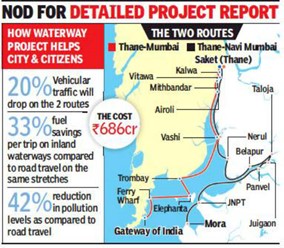
Source:
- Mumbai water taxi services: Here’s everything you need to know
- Mumbai to host India's first water taxi service
Image Source:
India’s vaccination program for children
- Context: India will be administering Covid-19 vaccines to children in the age group of 15-18 years from 2022.
- This decision to vaccinate adolescents and administer a precautionary dose to vulnerable groups were taken in view of the recent global surge of coronavirus infections and detection of the new Omicron variant of the virus.
- The Union Health Ministry has announced that Bharat Biotech’s Covaxin will be the only vaccine that will be administered to eligible recipients in the age group of 15-18 years and children born in 2007 and earlier shall be eligible to receive the vaccine.
- Beneficiaries can register online through an existing account on Co-WIN, or after creating a new account and children can book a slot using their parents’ existing Co-WIN accounts.
- All beneficiaries irrespective of their income status are entitled to get jabbed for free at government vaccination centres.

Source:
World’s first nuclear power plant using 4th generation HTGR
- Context: The world's first nuclear power plant which contains a pebble bed reactor (PBR), the fourth generation of high-temperature gas reactor (HTGR), has officially entered operation in East China's Shandong Province.
- HTGR has been called the safest type of nuclear reactor to date.
- The reactor will not melt when placed under duress and there is no risk of radiation leaks.
- Aside from a high-degree of safety, the temperature index of the reactor also matches multiple fields including petrochemical engineering, coal chemical industry and hydrogen production.
- There are a very few countries which have mastered HTGR technology, and thus its launch marks China consolidating its role as a world leader in nuclear power.
- The plant's core technologies were all domestically developed with 93.4 percent of the material used in the plant domestically sourced.
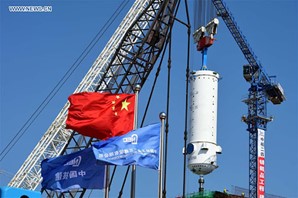
Source:
- World’s first nuclear power plant using 4th generation high-temperature gas reactor officially enters operation in E China’s Shandong
- China develops key component of world's first fourth-generation nuclear power plant
Image Source:
State schemes can cast a lifeline to this welfare plan: TH
Essence: The article talks about Pradhan Mantri Matru Vandana Yojana that was rolled out to provide cash support to pregnant and lactating mothers. The scheme launched with novel motive has been deficient on the grounds of limited coverage and falling rate of disbursements and enrollments. However, the parallelly running schemes by states shows increase in the number of beneficiaries and enrollment.
To replicate the success that of state schemes, PMMVY should extend the benefits to the second live birth along with increasing the benefit amount. Moreover the complex registration process should be simplified to increase the coverage. In order to achieve the Sustainable Development Goal of improving maternal health, the government needs to revisit the design and implementation of the scheme both. Last but not the least it could also draw the lessons from successful implementation of schemes by the states like Odisha.
Why you should read this article?
- To develop understanding about Pradhan Mantri Matru Vandana Yojana.
- To understand the lacunas in the scheme.
- To understand what steps can be taken to address those lacunas for benefit of the society.
- The article provides points for issues arising out of design and implementation of the government schemes. (GS-2)
Source:
This NSP cannot change Pakistan’s direction: TH
Essence: The editorial highlights the initiation of Pakistan’s first ever National Security Policy (NSP) which wants to commit Pakistan state with “safety, security and dignity” for its people. Several domains of economy, military, foreign policy, terrorism, water security and demographics are a part of the NSP. But one question remains - will Pakistan give prime focus to economy and resource allocation according to national policies or will Pakistan’s army continue to lay first claim to country’s resources. Through the opaque, non-scrutiny basis of operation, in the garb of defending the nation from external threats like India, Pakistan Army is actually defending no one but itself.
Opposing India and its policies has led Pakistan to fall into retrograde trap of opposing anything that could reform the nation. Eg. Stopping trade with Kashmir post abrogation of article 370. Another issue that plagues the system is alignment of fundamentalist groups with Pakistan’s political elite. Together, they support irrational policies towards their neighboring countries.
Their previous dependence on China for military support has grown to create economic dependence as well. Eg CPEC. China itself has spoken of a policy to temporarily shun the disputes to favor economic and commercial ties. Same should be the policy initiative for Pakistan through its NSP.
Why you should read this article?
- To understand the various dimensions of Pakistan’s National Security Policy.
- To understand the role Pakistan army has played over the years and its effect.
- To get an opinion on how the new NSP should orient for Pakistan’s progress.
Source:
Reforming the Foreign Tribunals: HT
Essence: The article talks about need for reforms in the Foreign Tribunals. Hasina Bhanu Case is a case in point in which Assam’s foreign tribunal accepted her as an Indian Citizen (2016). But, in 2017, the Tribunal had come up with a contrary opinion that she was a foreigner. It was finally the Guwahati High Court, basing its judgement on the principle of res judicate set aside the proceeding as illegal.
In 2018, Guwahati High Court in one of its judgements laid down that foreign tribunals issue only ‘opinion’ and not judgement. The article finds this aspect a little problematic. The foreign tribunals dwell on one of the most important issue- the citizenship status of individuals. Citizenship has often been described as the “right to have rights”: Not only because many of the Constitution’s guarantees are available only to citizens, but also because — under the Foreigners’ Act — non-citizenship exposes an individual to various forms of punitive State action, such as detention or deportation. Excessive executive control over appointments and conditions of service, as well as skewed procedures, have created a situation in which tribunals are incentivised to declare individuals as foreigners. The recent judgement of Guwahati High Court is a valuable one but the entire tribunal system needs review and reform for the sake of Constitutional Justice.
Why to read this article?
- The issue of reforms in the entire tribunal system is a reoccurring theme in judicial academia and Hasina Bhanu Case has once again highlighted the issue.
- Citizenship and associated topics (GS II) are burning issues in news and so the foreign tribunals become relevant for our exam point of view.
Source:
Ensuring Basic Rights of Employees
Background
- Foreign companies invest in India due to abundance of resource, presence of labour at relatively lower wages and special investment privileges.
- Effective administration and on ground quality performance is required to enhance corporate business environment in India in order with resurging the foreign capital investments.
Action against a Taiwanese Company for lapses in living conditions of the employess
- Issue: Foxconn-owned unit (a Taiwanese company which provides corporate services) had lapsed in ensuring quality of living conditions the employees in Chennai especially in terms of amenities and denied some basic employee rights at hostels and work space.
- Protest for the Basic Rights: After the company employees went on a protest that affected traffic on the Chennai-Bengaluru highway, the state government and the district administration stepped in for negotiations.
- Government’s Intervention: After intervening and the investigation process, Foxconn’s facilities has been placed on probation to ensure strict standards before the facility reopens.
- Hence, the government of Tamil Nadu now will continue to monitor conditions closely on the ground to ensure the basic rights of the employees.
- Foxconn has issued apology and are taking steps to enhance the facilities and services, and restructuring our local management team.

Quote: “Democracy, Good governance and modernity cannot be imported or imposed from outside a country- it should be an integral part” - Emile Lahoud
Sources:
Share the article
Get Latest Updates on Offers, Event dates, and free Mentorship sessions.

Get in touch with our Expert Academic Counsellors 👋
FAQs
UPSC Daily Current Affairs focuses on learning current events on a daily basis. An aspirant needs to study regular and updated information about current events, news, and relevant topics that are important for UPSC aspirants. It covers national and international affairs, government policies, socio-economic issues, science and technology advancements, and more.
UPSC Daily Current Affairs provides aspirants with a concise and comprehensive overview of the latest happenings and developments across various fields. It helps aspirants stay updated with current affairs and provides them with valuable insights and analysis, which are essential for answering questions in the UPSC examinations. It enhances their knowledge, analytical skills, and ability to connect current affairs with the UPSC syllabus.
UPSC Daily Current Affairs covers a wide range of topics, including politics, economics, science and technology, environment, social issues, governance, international relations, and more. It offers news summaries, in-depth analyses, editorials, opinion pieces, and relevant study materials. It also provides practice questions and quizzes to help aspirants test their understanding of current affairs.
Edukemy's UPSC Daily Current Affairs can be accessed through:
- UPSC Daily Current Affairs can be accessed through Current Affairs tab at the top of the Main Page of Edukemy.
- Edukemy Mobile app: The Daily Current Affairs can also be access through Edukemy Mobile App.
- Social media: Follow Edukemy’s official social media accounts or pages that provide UPSC Daily Current Affairs updates, including Facebook, Twitter, or Telegram channels.

